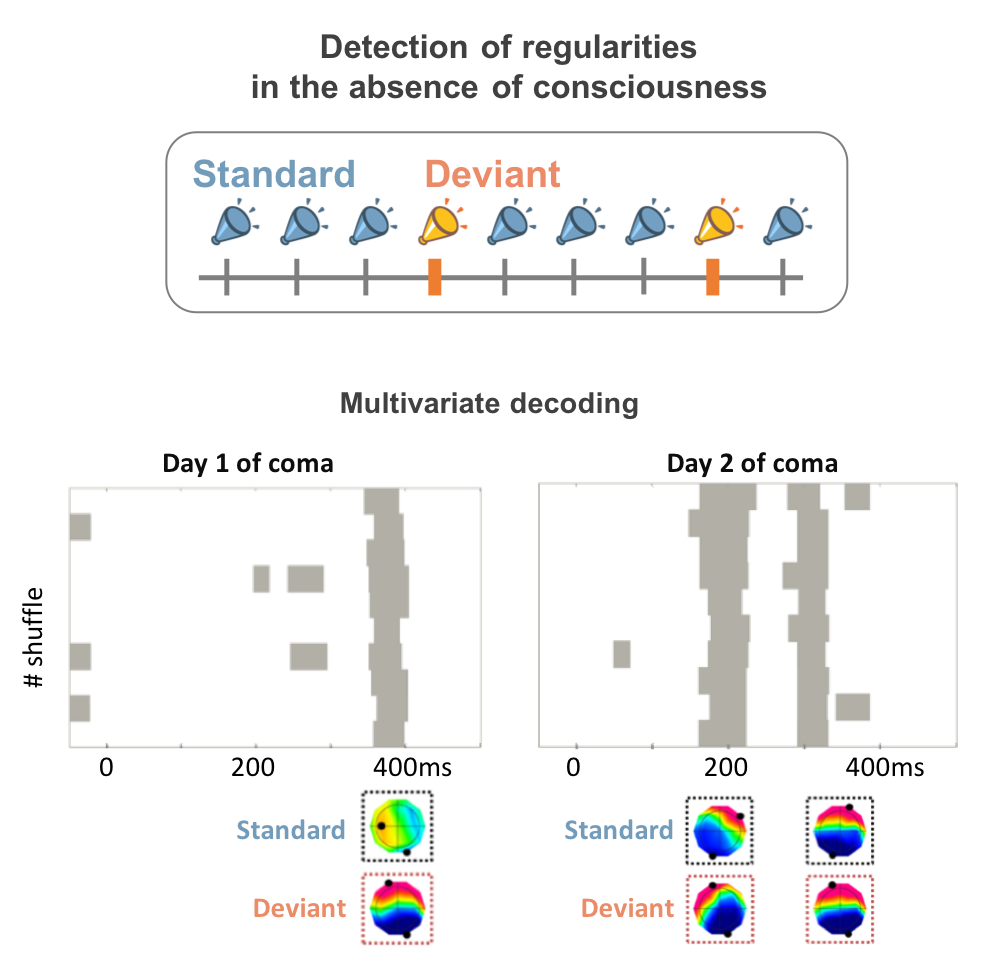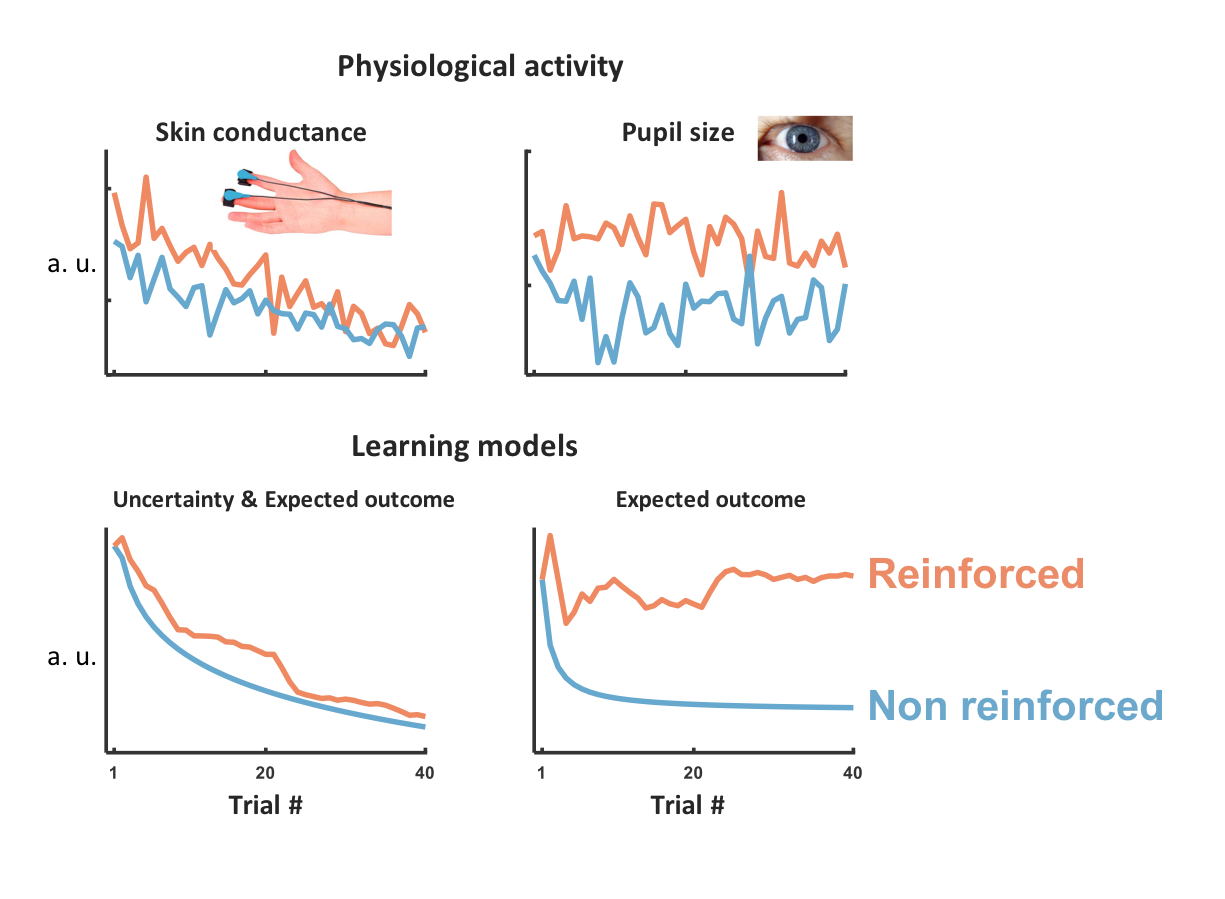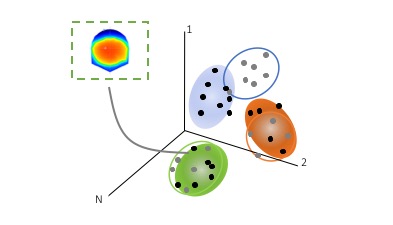Our research uses computational and machine learning techniques to study cognition, in particular in cases where conscious access to the environment is lost, such as during sleep.
To study how we learn from reoccuring environmental events, we use electrophysiological recordings (scalp, intracranial EEG and human single unit activity) in combination with computational modeling (multivariate decoding, learning models).
- Neural processing in the absence of consciousness
- Learning and predictions
- Machine learning for analysing physiological data
Neural processing in the absence of consciousness
The brain operates as a predictive machine, constantly detecting patterns in the environment and generating predictions about future events before these occur. Neural predictions are implemented not only in active conditions, i.e. when they are relevant to our actions, but also when conscious access to incoming sensory stimuli can be excluded, i.e. during sleep or coma.
Here, we are studying the neural mechanisms underlying learning of environmental regularities as a function of consciousness, using scalp and intracranial electroencephalography (EEG).
 Adapted from: Tzovara et al., 2016, Annals of Neurology, doi: 10.1002/ana.24622
Adapted from: Tzovara et al., 2016, Annals of Neurology, doi: 10.1002/ana.24622
Learning and predictions
The world around us is full of rich sensory experiences, which often follow repetitive rules. For example, temporal regularities, like the time of the day, might allow us to foresee and avoid subsequent traffic jams, or auditory events, like the sound of a siren, could help us predict the arrival of an ambulance, or a fire truck. Through exposure to reoccurring events we are able to learn patterns and eventually form predictions about future events before these occur.
To shed light in the neural computations that allow us to form predictions about future events, we are using machine learning and computational modeling techniques, to study activity of the central and peripheral nervous system during learning of environmental rules.
 Adapted from: Tzovara et al., 2018, PLoS Computational Biology, doi: 10.1371/journal.pcbi.1006243
Adapted from: Tzovara et al., 2018, PLoS Computational Biology, doi: 10.1371/journal.pcbi.1006243
Representative publications
- Chouiter L, Tzovara A et al. (2015) Experience-based Auditory Predictions Modulate Brain Activity to Silence as Do Real Sounds. J Cogn Neurosci. 27(10):1968-80. *equal contribution.
- Tzovara A, Simonin A, Oddo M, Rossetti AO, De Lucia M. (2015) Neural detection of complex sound sequences in the absence of consciousness. Brain 138(Pt 5):1160-6.
- Tzovara A, Korn C, Bach R.B. (2018) Human Pavlovian fear conditioning conforms to probabilistic learning. PLoS Computational Biology 14(8):e1006243.
Machine learning for analysing physiological data
Studying neural responses to environmental stimuli through electroencephalography (EEG), typically requires averaging hundrents or thousands of single-trial responses, and contrasting them at single electrode locations. Multivariate decoding techniques are typically used to model the distribution of single-trial EEG responses across the scalp, and extract topographic EEG responses in a data-driven way. These techniques can be used to model data at the single-patient level, to decode decisions from EEG responses, or to test the role of temporal intervals in processing environmental stimuli.

Adapted from: Tzovara et al., 2012, Develop. Neuropsychology, doi: 110.1080/87565641.2011.636851
Representative publications
- Tzovara A, Murray MM, Plomp G, Herzog MH, Michel CM, De Lucia M. (2012) Decoding stimulus-related information from single-trial EEG responses based on voltage topographies. Pattern Recognition. 45( 6): 2109–2122.
- Tzovara A, Murray MM, Bourdaud N, Chavarriaga R, del R. Millán J, De Lucia M. (2012) The timing of exploratory decision-making revealed by single-trial topographic EEG analyses. Neuroimage. 60(4):1959-69.
- De Lucia M, Tzovara A. (2015) Decoding auditory EEG responses in healthy and clinical populations: A comparative study. J Neurosci Methods. 250:106-13.